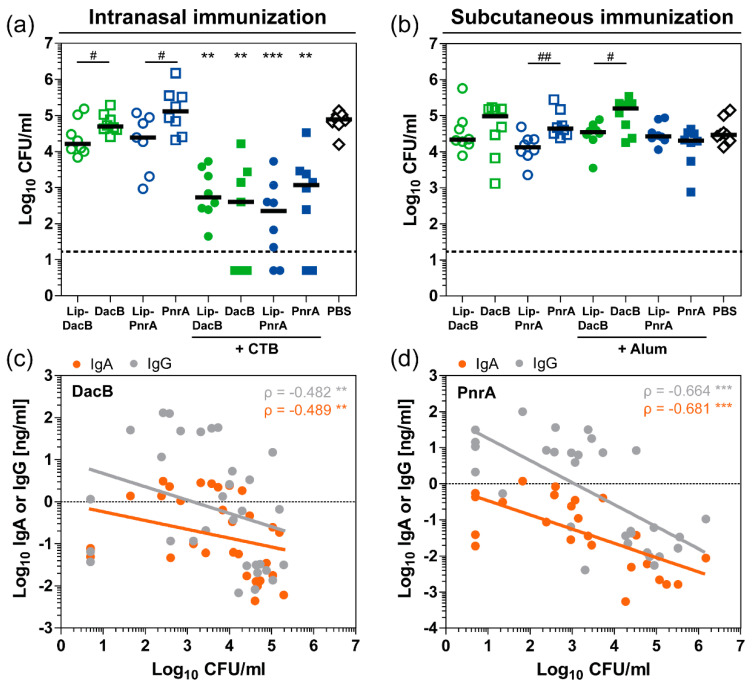Figure 6.
Protein lipidation as well as adjuvantation with CTB reduce the nasal bacterial load, which correlates inversely with nasal antibody levels. The bacterial load (Log10 CFU/mL) in nasal tissue of C57BL/6 mice three days post intranasal infection with 106 CFU S. pneumoniae was determined following three intranasal (a) or subcutaneous (b) immunizations with 5 µg of lipidated or non-lipidated DacB or PnrA with or without additional adjuvant. Symbols represent individual mice, solid lines the group median, and the dashed line indicates the lower limit of detection. Data were statistically analyzed either by a Kruskal–Wallis test accompanied by Dunn’s multiple comparison post-test, with all conditions compared to PBS-treated mice to compare multiple groups (**, p < 0.01; ***, p < 0.001) or by one-sided t-test on log-transformed data to compare two groups (#, p < 0.05; ##, p < 0.01). Paired analysis of CFU counts and nasopharyngeal IgA and IgG levels of intranasally DacB- (c) or PnrA-immunized (d) mice with data of vaccinations with lipidated or non-lipidated DacB or PnrA combined, respectively. Symbols represent individual mice (n = 8/group). Analysis was performed on log-transformed data. Spearman’s coefficients (ρ) and p-values are shown (**, p < 0.01; ***, p < 0.001). The coefficients of determination (R²) of the linear regression for DacB are 0.094 (IgA) and 0.090 (IgG) and for PnrA, 0.439 (IgA), 0.461 (IgG).

